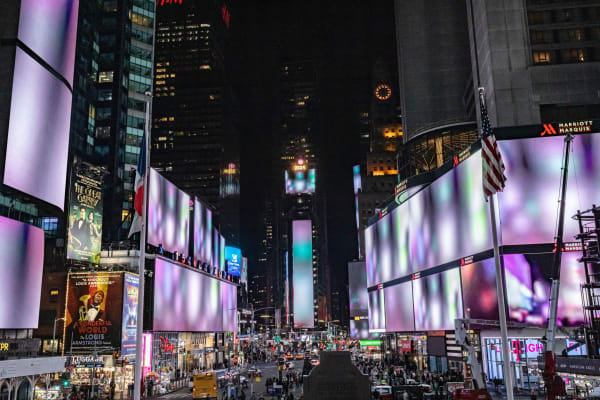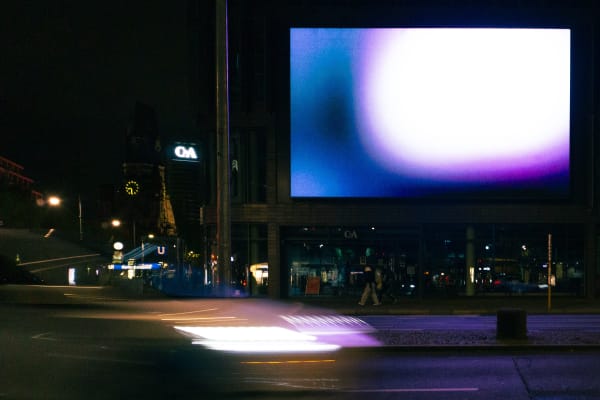Olafur Eliasson: Lifeworld: Times Square, New York
Eliasson, internationally renowned for artworks that address how we co-create our worlds, is transforming several of the world’s most iconic urban screens into expansive abstractions. Lifeworld will appear every evening at 20:24 for three months (1 October—31 December 2024) on Piccadilly Lights in London, K-Pop Square in Seoul, Limes Kurfürstendamm in Berlin and throughout November in Times Square, New York and globally on WeTransfer.com.
Lifeworld marks the first works from Elliasson under his recently-announced guest curatorship of WeTransfer, who have partnered with CIRCA as exclusive Digital Screen Partner. The commission will also take shape as a unique digital experience on WeTransfer's online public platform, where viewers from around the world can engage with the artwork 24/7.
Lifeworld appears at a time marked by polarising public debate: during the final days of the US presidential election and throughout the month of November, the public artwork will be presented synchronised across Times Squares’ 92 screens, in collaboration with the world’s largest and longest-running digital public art programme, Midnight Moment. Eliasson speaks to the importance of public space for “hosting a plurality of perspectives, co-created with whoever is there at that point in time”. Following other major public interventions by Eliasson, such as Ice Watch (2014), which drew attention to environmental and social issues, Lifeworld calls on us today to look at ourselves as individuals, to contemplate who we are and where we are, here and now.
Our connections and sensorial relationships to urban public space form the basis of this ambitious new artwork created for CIRCA. To Eliasson, the blur is in fact precise because as an abstraction, it offers up a more truthful representation of the current time and our feelings connected to it. In each iteration of Lifeworld, onlookers appear in a sort of mise en abyme, a recursive depiction of the onlooker within the imagery – allowing the viewer to see themselves seeing space. What emerges is “a sort of mirror, offering a radically different perspective on our immediate environment”. It aims to draw attention to the common world for which we all share responsibility.
Olafur Eliasson says: “Lifeworld explores how soft abstraction – images that are intentionally undefined and open to our personal interpretations – can reveal our place in the world in 2024. Sites like Piccadilly and Times Square are enormously impressive spectacles, with their advertising screens that usually display crisp, sensational imagery. It's a thrill; but the environment also determines my actions – driving me mostly to spend or to consume. Lifeworld shows the immediate site anew and its hazy qualities may prompt questions. If you are suddenly confronted with the reality of having a choice, you might ask what cities, lives and environments do we want to inhabit? And how do I want to take part in them?”
Lifeworld takes inspiration from the phenomenological notion that in an unmediated world, we inhabit and experience in common with others and nature. With this work, Eliasson suggests that by connecting to the lived here and now of experience, we may reconnect with one another, learn to live in uncertain times, and even to embrace the potential of a so-far shapeless future.
Images:




